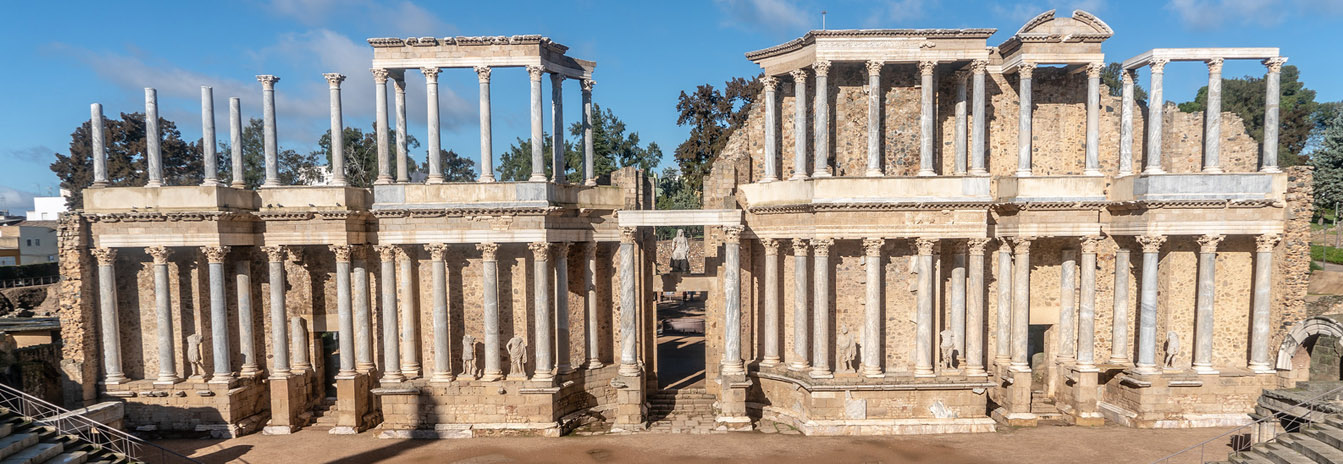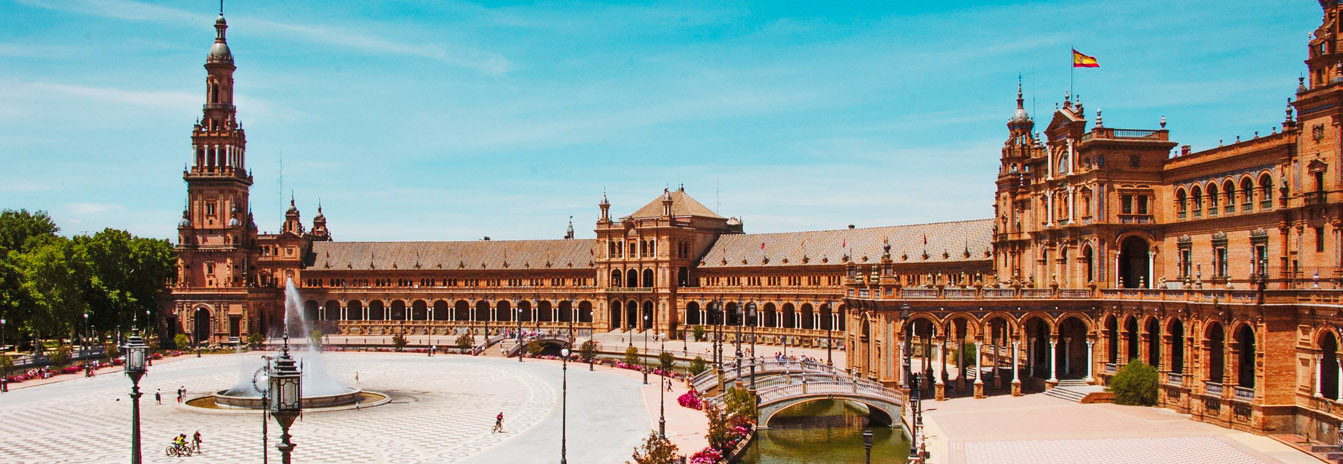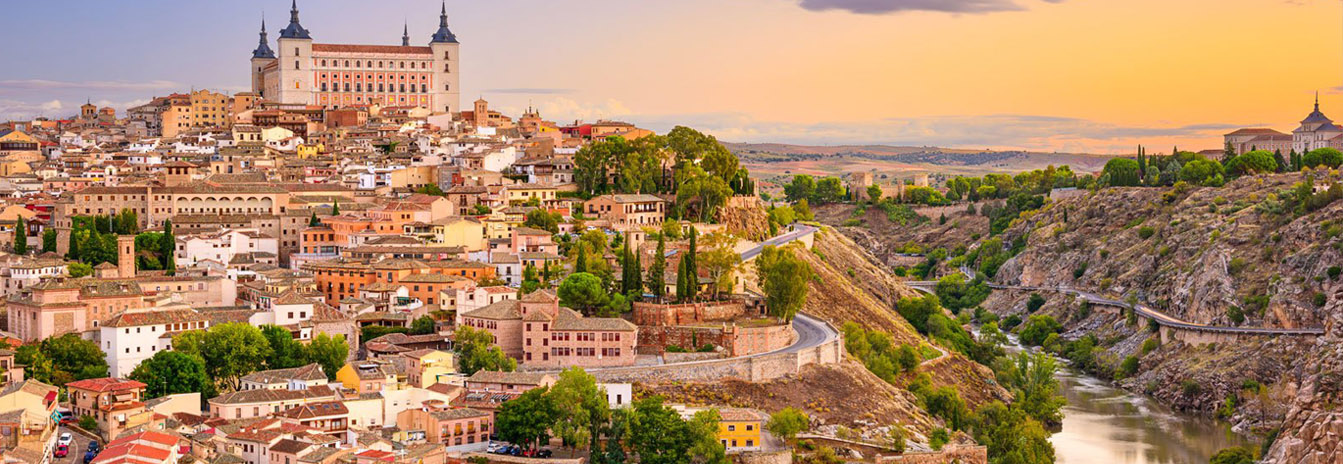According to legend, the arrival of the Jews -Sephardi- on the Iberian Peninsula took place during the times of Solomon; historical evidence suggests the Roman Age. The Jews, along with various other Mediterranean cultures, contributed to the formation of Hispanic culture and experienced their golden age during the Middle Ages, when they created their own neighborhoods and institutions -aljamas- in all of the major cities. The cultural symbiosis they enjoyed with the other existing religions was interrupted at the end of the 15th century.
Day 1 Arrival in Madrid. Continue to Segovia for overnight
Day 2 After visiting two masterful secular works in Segovia, the Alcázar and the Aqueduct, we will enter into the religious realm of the city. The present day cathedral, which dates from the 16th century, stands on land left unoccupied after the expulsion of the Jews. Beneath the shelter of the cathedral we can still note the urban presence of the Jews: documents indicating the location of the butcher shop and at least one of the five synagogues -notably the present day conventual church of Corpus Christi-, and the cemetery. Ávila, besides its Romanesque legacy noted in the walls, churches and cathedral, underscores the difficulties faced by converted Jews. The legend of Saint Vincent tells of one case during the Roman Age; the Jewish ancestry of Saint Teresa brings it up again in the 15th century, as does the work of Thomas of Torquemada, founder of the Saint Thomas convent.
Travel to Salamanca for overnight
Day 3 While Salamanca could never boast a prominent Jewish community, we will attempt to trace its culture by focusing on the city’s ancient university. Additionally we will visit the two cathedrals, the House of Shells and the Main Square. Upon arriving in Hervás, we find ourselves in the region of Extremadura, an important Jewish refuge during the 15th century because of its religious tolerance at the time. Hervás, situated on the Silver Route, maintains an important Jewish quarter.
We will travel to Cáceres for overnight
Day 4 The Jewish quarter of Cáceres boasted a long history, had the necessary institutions to be considered an authentic aljama, and was one of the five largest Jewish communities of the kingdom of Castile. The quarter was settled in two neighborhoods, the Old and the New, and as usual, the old synagogue was transformed into a place of Christian worship, the chapel of San Antonio. Between both quarters, we will take a walk through the palaces of the historical district. After a brief stay in Roman Mérida, which according to Hebrew literature was home to the first Jewish settlement in the 1st century, we will continue our journey towards Andalusia.
Overnight in Seville
Day 5 It was in Andalusia where the Hebrew culture and the Muslim World came together on the Iberian Peninsula. The old Jewish quarter of Seville is known today as the Barrio de Santa Cruz. It is located close to the mosque, rebuilt as a Gothic Cathedral, the Giralda bell tower, the Courtyard of the Orange Trees, and the Royal Palaces built in the Mudéjar style. Later in the afternoon we will roam the neighborhoods of Granada visiting the Albaicín and Bib-Rambla districts, the Renaissance cathedral, the Royal Chapel, and the tomb of the Catholic Kings, the monarchs who in their zeal to achieve religious unity, completely ended the coexistence of the three prominent religions on Spanish territory.
Overnight in Granada
Day 6 In the morning we will visit the Alhambra, an exquisite complex and palace of the last Arab kings to inhabit the peninsula. On the way to Córdoba, we will stop by Lucena, the self-proclaimed “Sephardic Pearl” where in the 12th century a theocratic Jewish republic was formed along with a very important Talmudic School. The only remnants left today are the alleys in the Jewish quarter, the imposing Moral castle, and the Baroque church of San Mateo. Córdoba is the third of the Arab capitals of Al-Andalus, having been the capital city during the zenith of Arab rule. The great mosque is from this period and has been well preserved despite, or perhaps because of, its conversion to a Christian church. Close by, the welcoming Jewish quarter maintains the only synagogue in Andalusia, which was saved in the 19th century when later additions were eliminated. Among other notable Jewish districts, Córdoba stands out for being the home of the Rabbi Maimónides.
Overnight in Córdoba
Day 7 The end of our tour will bring us to Toledo which is the Spanish city that best summarizes the heritage of the three monotheistic religions: from the encounters between the Visigoths and the Jews, to the still existent famed School of Translation. There is also the Christian legacy represented by the Cathedral and San Juan de los Reyes, a small, ancient Mosque, and two Synagogues, Santa María la Blanca and El Tránsito, the latter being the most important synagogue of the entire country featuring an interesting Museum of Hebrew culture.
Overnight in Toledo
Day 8 Transfer to the Madrid Airport
SEFARAD, A JOURNEY INTO JEWISH SPAIN 8 DAYS:
- Day 1 MADRID – SEGOVIA
- Day 2 SEGOVIA – ÁVILA – SALAMANCA
- Day 3 SALAMANCA – HERVÁS – CÁCERES
- Day 4 CÁCERES – MÉRIDA – SEVILLA
- Day 5 SEVILLA – GRANADA
- Day 6 GRANADA – LUCENA – CÓRDOBA
- Day 7 CÓRDOBA – TOLEDO
- Day 8 TOLEDO – MADRID
 |
 |
 |





